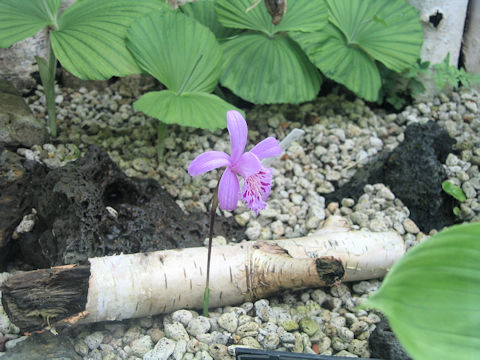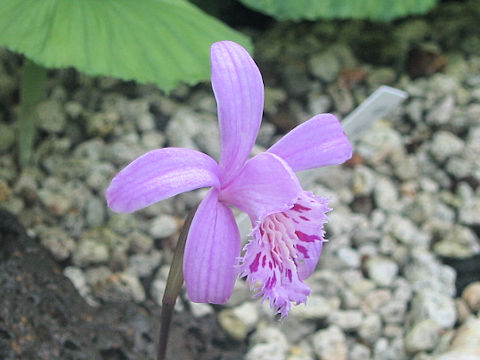 |




|

|
ÌìAMBElìE_ìÈ©çr}ɪzµÄ¢Ü·BWQOOO`ROOO[gÌu½©Ë²æ¤iPinus armandiijvÈÇÌjt÷Ñɶ¦A³ÍPO`QOZ`ÙÇÉÈèÜ·BR©çS²ëAÔsðLεÄAsNFðÑѽ¡FÌÔð穹ܷBOÙÉÍÔFÌÁª èÜ·BêÅÍu_ìÆfiyun nan du suan lanjvÆÄÎêÜ·B
|

|
È^CgL\E®Ì½NÅAw¼Í Pleione yunnanensisBp¼Í èܹñB
|

|
The Pleione yunnanensis belongs to Orchdaceae (the Orchid family). It is a perennial herb that is distributed in southern China from Guizhou, Sichuan, and Yunnan provinces to Burma. It grows in coniferous forests such as "Armand pine" (Pinus armandii) at elevations of 2000 to 3000 m. It grows 10 to 20 cm tall, and around March to April, it grows flower stalks and produces mauve flowers with a pinkish tint. The labellum has reddish purple spots. In Chinese, it is called "_ìÆf" (yun nan du suan lan).
|

|
åãsß©æuçâ±ÌÔÙvÉÄA2005N0421úBeB
|



